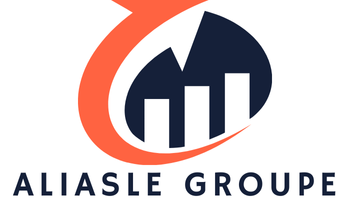Mastering Your Marketing Strategy: A Step-by-Step Guide to Building a Powerful Content Calendar for Sheffield Firms
In the bustling city of Sheffield, where businesses are constantly vying for attention, having a robust marketing strategy is crucial for standing out. One of the cornerstone elements of any effective marketing plan is a well-structured content calendar. Here’s a comprehensive guide to help Sheffield firms master their content marketing and elevate their brand presence.
Understanding the Importance of a Content Calendar
Before diving into the nitty-gritty of creating a content calendar, it’s essential to understand why it’s so vital for your business. A content calendar serves as a roadmap for your content marketing efforts, ensuring consistency, organization, and alignment with your overall business goals.
Also to read : Your ultimate guide to navigating healthcare in portugal
- Consistency: Regularly posting high-quality content keeps your audience engaged and coming back for more.
- Organization: A calendar helps you plan and schedule content in advance, reducing last-minute scrambles and ensuring all team members are on the same page.
- Alignment: By tying your content to specific business objectives, you can measure its effectiveness and make data-driven decisions.
Identifying Your Target Audience
To create content that resonates, you need to know who your audience is. Here are some steps to help you identify and understand your target audience:
Demographic Analysis
- Age, gender, location, and other demographic factors can help you tailor your content to the right people.
- For example, if you’re a Sheffield-based business catering to young professionals, your content might focus on lifestyle, career development, and local events.
Behavioral Analysis
- Understand how your audience interacts with your brand and other similar businesses.
- Tools like Google Analytics can provide insights into user behavior on your website, helping you create content that addresses their needs and interests.
Feedback and Surveys
- Engage with your audience through social media, email newsletters, or surveys to gather direct feedback.
- Jill Wells Heath, EVP at NV5, emphasized the importance of understanding company goals and market knowledge when working with consultants like Morrissey Goodale, a principle that also applies to understanding your audience.
Conducting Keyword Research
Keyword research is a critical component of any digital marketing strategy, including content marketing. Here’s how to do it effectively:
Topic to read : Crafting a Powerful Internal Communication Plan for Your London Business: A Step-by-Step Guide
Using SEO Tools
- Tools like Google Keyword Planner, Ahrefs, or SEMrush can help you identify relevant keywords and phrases your target audience is searching for.
- For instance, if you’re a Sheffield-based bakery, keywords like “best bakeries in Sheffield” or “Sheffield cake shops” could be crucial.
Analyzing Competitors
- Look at what keywords your competitors are ranking for and identify gaps where you can create unique content.
- This competitive analysis can also help you understand what types of content are performing well in your industry.
Creating a Comprehensive Content Calendar
Now that you have a clear understanding of your audience and the keywords you need to target, it’s time to build your content calendar.
Monthly Themes
- Divide your content into monthly themes that align with your business goals and seasonal trends.
- For example, a Sheffield fashion store might focus on winter clothing in November and December.
Weekly Content Plan
- Break down your monthly themes into weekly content plans.
- This could include blog posts, social media updates, email newsletters, and other types of content.
Daily Tasks
- Assign daily tasks to team members to ensure the content is created, reviewed, and published on time.
- Use project management tools like Trello or Asana to keep everyone organized.
Types of Content to Include
A diverse content mix is essential for engaging your audience across different media channels.
Blog Posts
- In-depth articles that provide valuable information to your audience.
- For example, a Sheffield health and wellness center could write about the benefits of yoga or local fitness events.
Social Media Updates
- Short, engaging posts that keep your audience informed and entertained.
- Use platforms like Facebook, Instagram, and Twitter to reach different segments of your audience.
Video Content
- Videos can be highly engaging and are perfect for platforms like YouTube, Instagram Reels, and TikTok.
- OCPR, a content creation service in Sheffield, offers video editing and animation services that can help elevate your brand’s presence.
Email Newsletters
- Regular newsletters that keep your audience updated on new products, services, or events.
- Use email marketing tools like Mailchimp to create and send professional-looking newsletters.
Best Practices for Content Creation
Here are some best practices to keep in mind when creating your content:
Clear and Concise Writing
- Ensure your content is easy to read and understand.
- Avoid jargon and technical terms unless they are relevant to your audience.
High-Quality Visuals
- Use high-quality images, infographics, and videos to make your content more engaging.
- Tools like Canva can help you create professional-looking visuals without needing extensive design experience.
SEO Optimization
- Optimize your content with relevant keywords to improve your search engine rankings.
- Use meta descriptions, headings, and alt text for images to enhance your SEO.
Leveraging Digital Marketing Channels
To reach your target audience effectively, you need to leverage various digital marketing channels.
Social Media Networks
- Use social media platforms to distribute your content and engage with your audience.
- For example, Instagram is great for visual content, while LinkedIn is better for B2B marketing.
Search Engine Optimization (SEO)
- Optimize your website and content to rank higher in search engines.
- This will help you attract organic traffic and increase your brand’s visibility online.
Paid Advertising
- Use paid advertising channels like Google Ads, Facebook Ads, and LinkedIn Ads to reach a broader audience.
- Set clear goals for your ads, whether it’s to drive traffic, generate leads, or increase sales.
Measuring and Adjusting Your Strategy
To ensure your content calendar is effective, you need to measure its performance regularly and make adjustments as needed.
Key Metrics to Track
- Website traffic and engagement metrics like page views, bounce rate, and time on page.
- Social media metrics like followers, engagement rate, and reach.
- Email marketing metrics like open rate, click-through rate, and conversion rate.
Analyzing Data
- Use analytics tools to analyze your data and identify trends and patterns.
- Adjust your content calendar based on what is working and what isn’t.
Practical Insights and Actionable Advice
Here are some practical insights and actionable advice to help you master your content marketing strategy:
Be Consistent
- Consistency is key when it comes to content marketing. Ensure you post content regularly to keep your audience engaged.
Engage with Your Audience
- Respond to comments and messages promptly to build a community around your brand.
- Use social media to engage in real-time conversations with your audience.
Stay Up-to-Date with Trends
- Keep an eye on industry trends and adjust your content calendar accordingly.
- Attend industry events and webinars to stay informed about the latest best practices.
Detailed Bullet Point List: Steps to Create a Content Calendar
Here’s a detailed list of steps to create a content calendar:
-
Identify Your Goals: Determine what you want to achieve with your content marketing strategy.
-
Increase brand awareness
-
Drive traffic to your website
-
Generate leads
-
Increase sales
-
Know Your Audience: Understand who your target audience is and what they are interested in.
-
Demographic analysis
-
Behavioral analysis
-
Feedback and surveys
-
Conduct Keyword Research: Identify relevant keywords and phrases your audience is searching for.
-
Use SEO tools
-
Analyze competitors
-
Plan Monthly Themes: Divide your content into monthly themes that align with your business goals and seasonal trends.
-
Winter clothing in November and December
-
Summer sales in June and July
-
Create a Weekly Content Plan: Break down your monthly themes into weekly content plans.
-
Blog posts
-
Social media updates
-
Email newsletters
-
Assign Daily Tasks: Assign daily tasks to team members to ensure the content is created, reviewed, and published on time.
-
Use project management tools like Trello or Asana
-
Optimize for SEO: Optimize your content with relevant keywords to improve your search engine rankings.
-
Use meta descriptions, headings, and alt text for images
-
Distribute Content: Use various digital marketing channels to distribute your content.
-
Social media networks
-
Search engine optimization (SEO)
-
Paid advertising
-
Measure and Adjust: Measure the performance of your content calendar regularly and make adjustments as needed.
-
Track key metrics
-
Analyze data
-
Adjust your content calendar based on what is working and what isn’t
Comprehensive Table: Comparing Digital Marketing Channels
Here’s a comprehensive table comparing different digital marketing channels:
| Channel | Description | Benefits | Challenges |
|---|---|---|---|
| Social Media | Platforms like Facebook, Instagram, Twitter, and LinkedIn. | High engagement rates, targeted advertising, cost-effective. | Algorithm changes, competition for attention. |
| SEO | Optimizing your website and content to rank higher in search engines. | Long-term organic traffic, cost-effective, builds credibility. | Time-consuming, requires continuous optimization. |
| Paid Advertising | Using platforms like Google Ads, Facebook Ads, and LinkedIn Ads. | Quick results, targeted advertising, measurable ROI. | Can be expensive, requires ongoing budget allocation. |
| Email Marketing | Sending newsletters and promotional emails to your subscribers. | High conversion rates, personalization, cost-effective. | Spam filters, unsubscribes, maintaining engagement. |
| Content Marketing | Creating valuable content to attract and retain a clearly defined audience. | Builds trust, drives organic traffic, supports SEO efforts. | Time-consuming, requires consistent effort, measuring success can be challenging. |
Quotes and Insights from Industry Experts
Here are some quotes and insights from industry experts that highlight the importance of a well-planned content calendar:
-
“Mick Morrissey and his excellent team were with us at every step of our process to prepare our firm for sale. They strategically worked with us early on to position our company for a successful outcome,” said Jill Wells Heath, EVP at NV5, emphasizing the importance of strategic planning in business, a principle that also applies to content marketing.
-
“Mastering your online presence is about dividing it into sections and using the right tools,” explained Patrick Schaudel, VP at IONOS, highlighting the need for a structured approach to digital marketing.
By following these steps, leveraging the right digital marketing channels, and continuously measuring and adjusting your strategy, you can build a powerful content calendar that drives real results for your Sheffield-based business. Remember, consistency, engagement, and SEO optimization are key to making your content marketing efforts successful.





